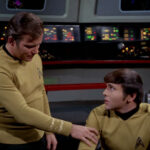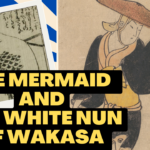
Writing Badass Women
by Durrilion
I grew up believing that men and women are equal. Were she still alive, my mother would cringe to hear this, but she was a feminist – of the ‘stay at home with my kids, but don’t tell me I can’t do something’ type. This often leaves me perplexed by people who think women are somehow inferior to men. Men and women are human beings, and as such they both have human strengths and weaknesses.
As a lover of fantasy, and an aspiring author, I have often wondered what the secret, or the trick is to writing believable female characters. It turns out I have known how all along. It just took sitting in on this panel from Phoenix Comicon for me to see it.
Panelists, all published authors, Elizabeth Bear, Alexandra Oliva, Neo Edmund (the ‘token’ male), Aprilynne Pike (not pictured), Beth Cato, Christina Henry, and Katie Salidas shared their views of what makes and breaks a believable female character.


The panel kicked off with not only the authors introducing themselves, but also sharing their favorite badass woman. I found the list reassuring since a few of the characters mentioned were some of my favorites as well. Ripley from the ‘Alien’ franchise, Hermione Granger from ‘Harry Potter’ (Neo even said “Those boys would not have been able to survive without her”), Mulan, Zoe from ‘Firefly’, Ivanova from ‘Babylon 5’, and Penelope from ‘The Odyssey’. Though I have to admit I never read that classic Greek epic poem, so I do not have a full understanding of her. Christina said Penelope was the one who stayed home, kept the kingdom together, kept her son alive, all while waiting for her husband to return from his ‘glorious’ adventures overseas.
Now on to the panel itself. Let’s begin with the positive:
When it is time to write, consider the character as just a person. What are their struggles, and goals? Do they have any strengths or weaknesses? What other ways can the author convey strength beyond just the physical fitness?
It is possible to start with a stereotype as long as the character is humanized along the story’s arc. A typical ‘buxom blonde expected to have no intelligence, is slowly revealed to be a Harvard graduate. Have other female archetypes been considered as heroines? Homemakers, tradespeople, healers, etc can all take on strong/powerful roles in a novel, without having to be violent.
The character should be developed as a strong person, then when it becomes necessary, consider if the character is female or male. Remember that women are allowed to have bad days too, so let the character express that publicly. At the very least let her express it to the readers.
With that in mind, here are things to avoid:
Violent/overly physically aggressive characters are often seen as one-dimensional and essentially weak from a narrative point of view. Don’t rely on the ‘I like to hit things and people’ type to catch, or even retain open-minded readers.
Excessive profanity, unless there is a genuine reason for the character to speak so, can be seen as a crutch. Even in the real world this sort of language is seen as a crutch, a way for a woman to be given even a modicum of respect from male colleagues. Let the character tell you how they will speak. In a fantasy novel, would a priestess of a ‘good’ deity use offensive language? How about a ‘modern’ or sci-fi ‘priestess? Even just a character with a high moral code is unlikely to swear like a sailor on leave.
Characters who are amazing at everything often come across as over compensating. While there are women who are naturally amazing at almost everything they do, they also have an internal struggle that can tell more about them as a person. Skip the astrophysicist, playboy bunny, soccer mom, secret agent who fixes cars in her spare time after decoupaging fall foliage for a homemade luncheon with her bestest gal pals. Instead try for the village healer, who overcomes her own fears of the unknown to gather herbs once the entire village is struck down with an illness. There are of course other examples better suited to other genres, but I am more familiar with fantasy.
If the first step is describing the character’s physical form, it is quite likely one has taken the wrong path to developing a strong, believable woman. Physical appearance bombards readers in the real world. Most of the time people read to escape that world and live in one where the rules are different. That being said, remember this is about the character’s development, and personality. It should not be about how tight their clothing is, or how well they fill out a dress, or shirt.
Avoid the trap of the amazing, ‘can do’ woman who in the last third of the book, suddenly becomes just the leading male’s girlfriend, so helpless she can barely stand from fright. Unless she has been knocked unconscious is there a justifiable reason for such a woman to ‘suddenly’ become helpless? As a reader, I MIGHT be willing to believe such a paralysis if the character had a phobia that was developed throughout the majority of the book. Take for example Ron Weasley’s arachnophobia. It leaves him pretty helpless for several chapters, but reader’s learned of his fear much earlier in the book. His fear did not render him helpless for the remainder of the book either. Keep that in mind when in developing a character.
Knowing that women are just as complex as men makes it easier for writers, both male, and female, to truly bring realistic, multifaceted woman to life on the page, and screen. Speaking of…the new Wonder Woman is out now! Hint, hint.






